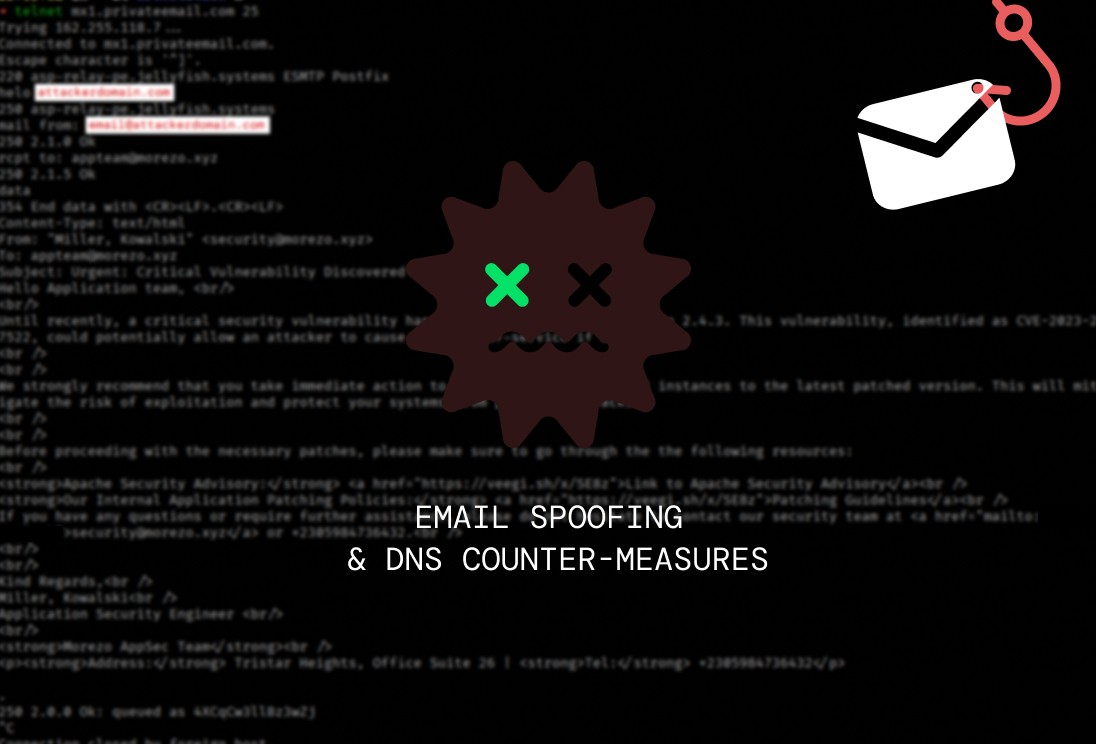When it comes to phishing attacks, email is a favorite attack vector among threat actors due to it’s unsophisticated nature. It’s also now much easier to craft these email due to the prevalence of artificial intelligence making them much more legitimate looking.
Spoofing in action
To demonstrate how easy it can be to spoof email addresses and send one of those phishing emails to vulnerable email clients/servers, we are going to come up with a scenario involving a fictional company called Morezo, which specializes in software development. Morezo has a website available at https://morezo.xyz. As a potential attacker, we learnt that Morezo has a few email inboxes mapped on the same domain as they were included in an email list dump we found somewhere on the web. Two of the emails we found were [email protected] and [email protected] which we are going to target.
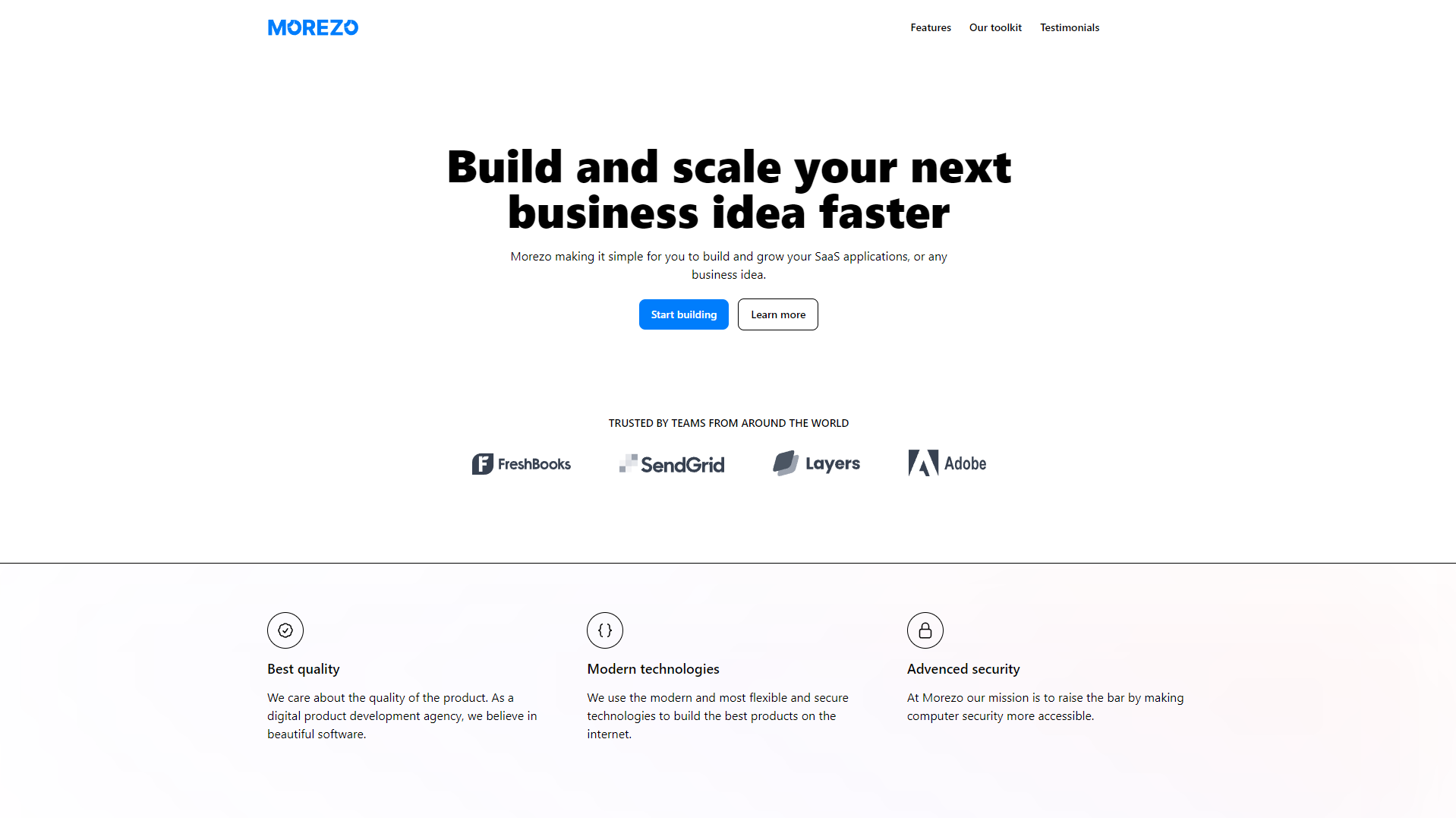
Morezo Homepage
Before starting we will need our own email address. Ideally our domain should look similar to morezo.xyz, maybe something like moreso.xyz, morezo.net, morezzo.xyz etc. In this case however, i’m going to use whatever domain I have at my disposal and create an inbox using a service like Zoho Mail, SendGrid or Mailgun. Once the email account is configured, we can go ahead and start investigating what email provider our target is using. We can find this information by inspecting the DNS records of the target’s mail server, which can be easily done using nslookup or dig with MX as the record type
dig morezo.xyz MX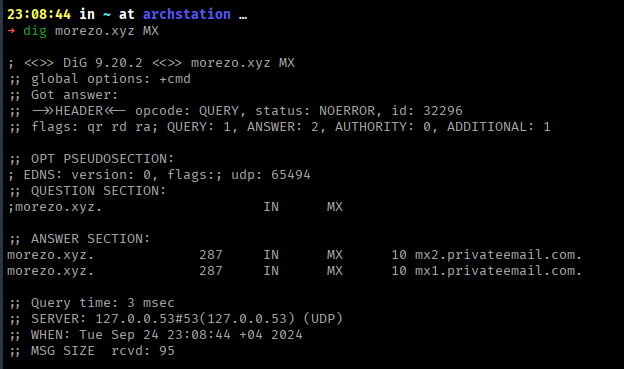
Running dig should return the FQDN of their SMTP server, which in this case is mx2.privateemail.com and mx1.privateemail.com. We can now attempt to communicate with one of the SMTP servers using telnet (or netcat) by running the following command:
telnet mx1.privateemail.com 25If there is no firewall blocking inbound access to the server on port 25 then this should allow us to open a telnet session.

Now that the session is open, we can execute the required SMTP commands, which are all explained in RFC 5321 (Section 4.1). The order of the commands executed are explained in section 3.3. Covering SMTP here will just make this post unnecessarily long. I’ll make use of Google’s Gemini to generate the email’s body to make it more legitimate looking.
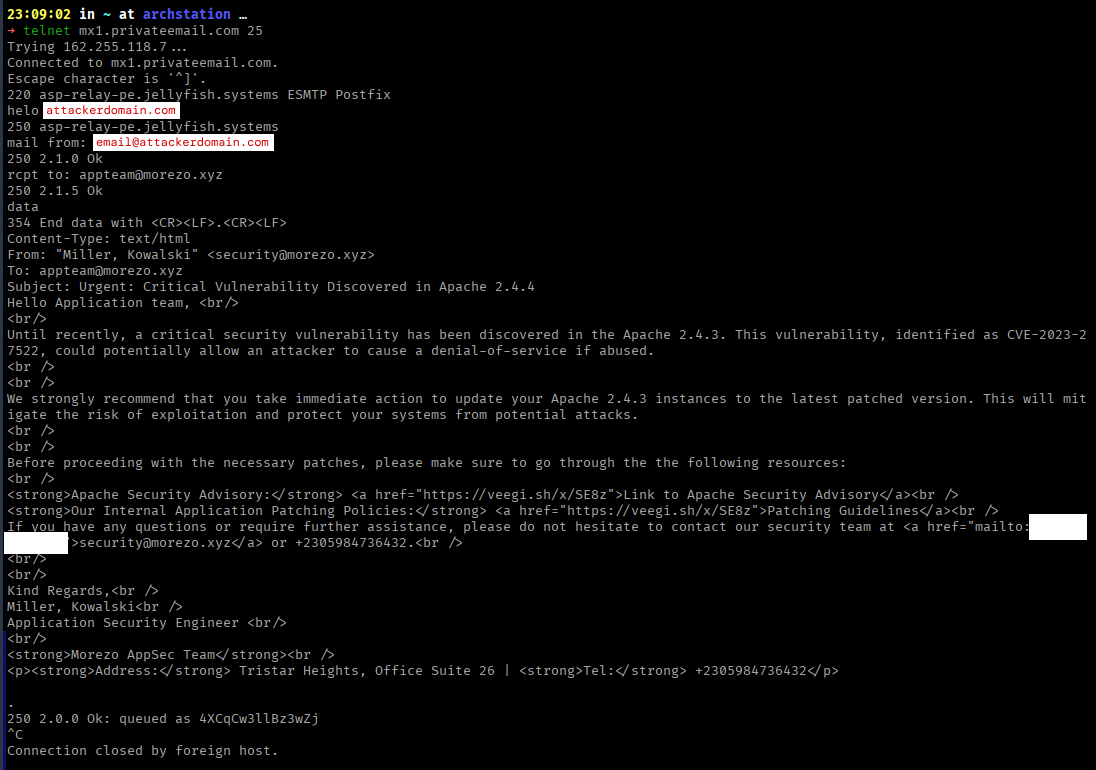
Now that our email transaction has been successful, we can check our email inbox on morezo’s side.
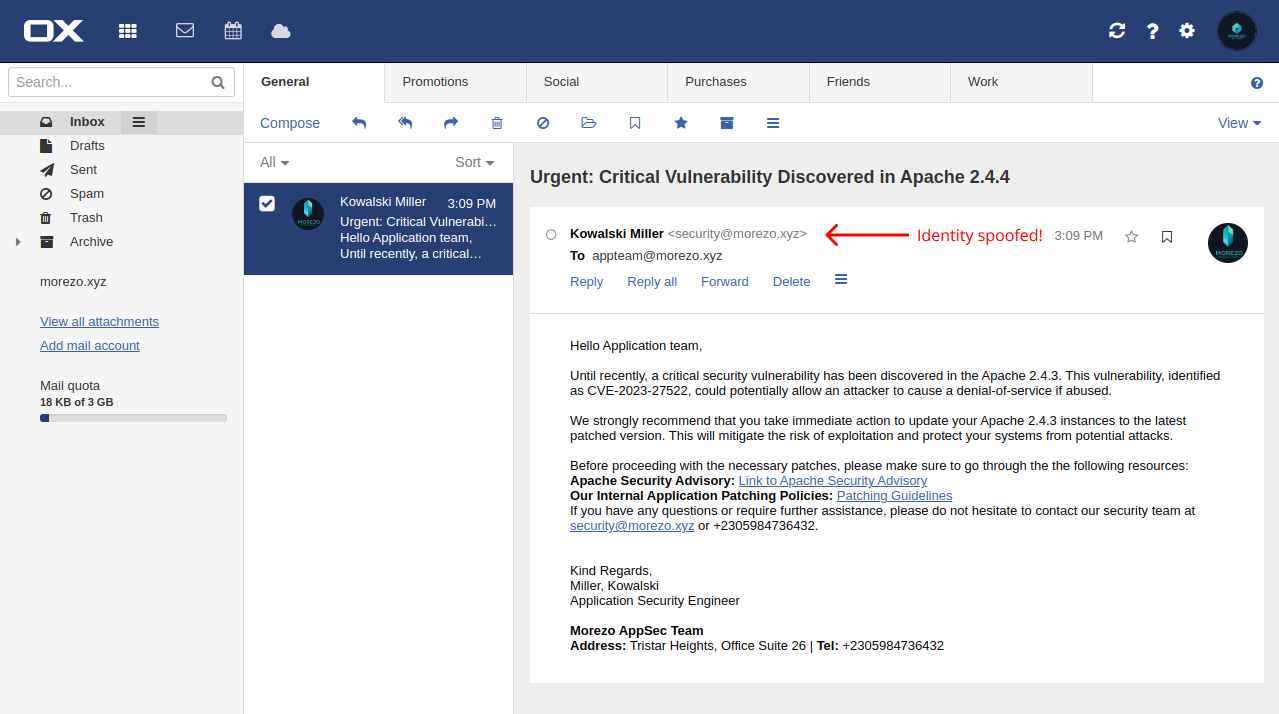
As expected, without any spoofing countermeasures in place, the email has successfully reached morezo’s inbox, and not only that but we have also been able to spoof the sender’s identity!
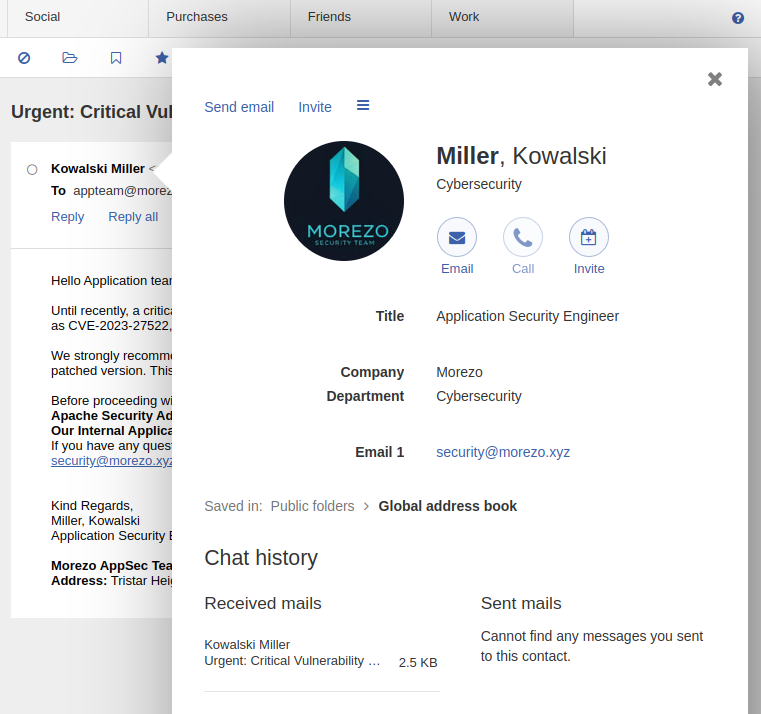
Looking at the email headers, we can see that this is not a legitimate email coming from the real “Kowalski Miller”.
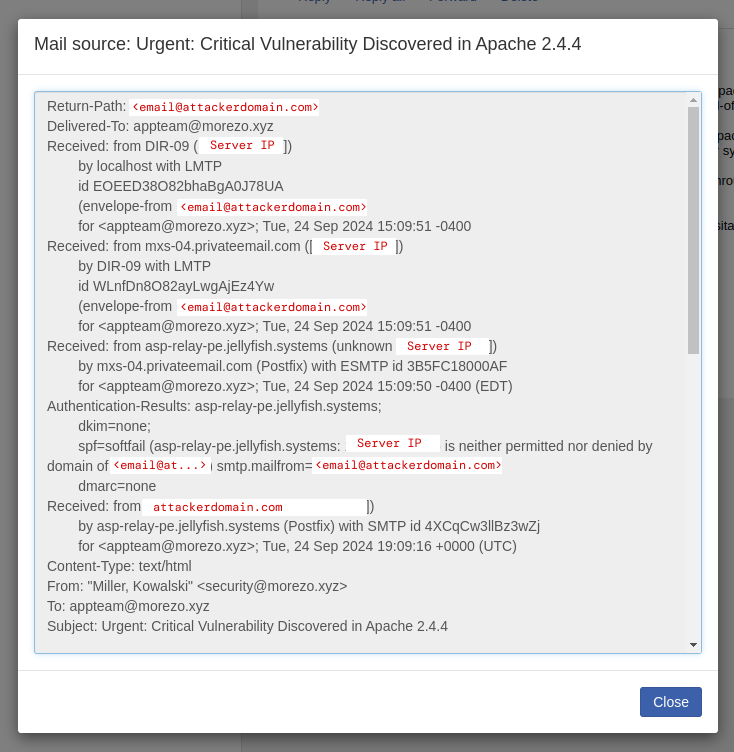
However, in reality most people won’t check an email’s header. Additionally, any trickery like encoding special characters to make the attacker’s domain similiar to the target’s domain makes it hard to spot for the human eye.
Our attack has been successful, we have been able to spoof an official email address and send an email containing malicious links. This demonstrates that the email server of Morezo is vulnerable to spoofing attacks. This makes it very easy for someone at Morezo to inadvertently become a victim of a cyber-attack.
How to prevent Email Spoofing
We are going to explore some DNS-based countermeasures that we can implement to reduce the likeliness of such attacks from being successful. These countermeasures are Sender Policy Framework (SPF), Domain Keys Identified Mail (DKIM) and Domain-Based Message Authentication Reporting and Conformance (DMARC). SPF, DKIM and DMARC are email verification methods which can filter out and block spam or phishing emails. On their own, they are pretty much ineffective. However, when implemented properly together, they will prevent spoofed emails from reaching your inbox. Let’s start by looking at what SPF is and how it works.
What is Sender Policy Framework (SPF)
SPF is a domain-based email authentication method whereby domain owners configure their DNS with a list of authorized IP addresses and mail servers which are allowed to send emails using their domain. The recipient mail servers can then use this list to cross-check that any email received indeed originated from an authorized server.
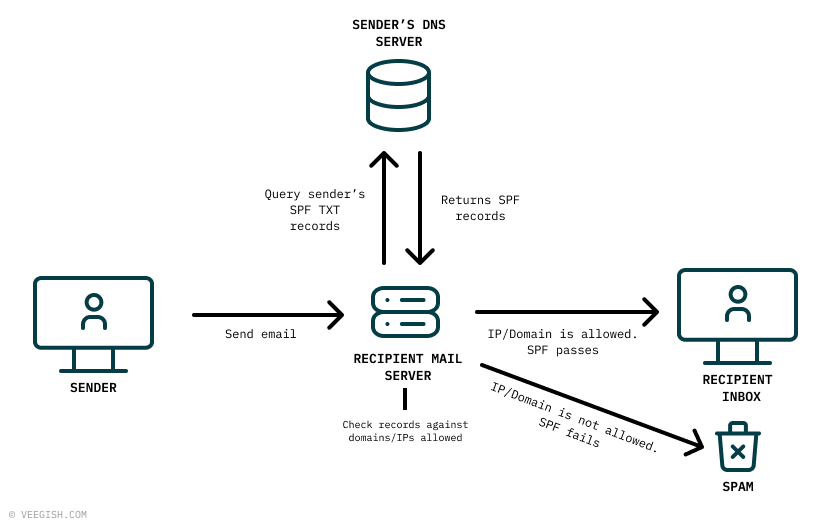
In it’s simplest form, an SPF TXT record may look like this:
v=spf1 include:spf.privateemail.com ~allThis record implies that only the domain privateemail.com is allowed to send emails, while any other domain is prohibited. A full list and detailed explanations of SPF record syntax as well as SPF failure handling can be found on dmarcian.com.
While SPF provides some form of authentication layer, on its own it is not very effective. This is because SPF only checks the envelope FROM header, also known as the SMTP MAIL FROM, Return-Path or Bounce Address. An Email transaction is made up of two parts, an envelope and the email itself. In our earlier example, our email envelope was this part:
helo attackerdomain.com
mail from: [email protected]
rcpt to: [email protected]
dataAnd our email was this part:
From: "Miller Kowalski" <[email protected]z>
To: [email protected]
Subject: Urgent: Critical Vulnerability Discovered in Apache 2.4.4
[...email body]SPF was designed to validate the envelope Mail From header, not to check for any alignment between it and the Email From header, which in our previous example were both different. Also in case SPF fails, the receiving server isn’t required to do anything to block the email.
What about Domain Keys Identified Mail (DKIM)?
DKIM is another email security standard, except unlike SPF, it uses a signed hash to detect if an email has been altered during transit or forged at the source. DKIM works by employing a set of private and public keys to sign and verify any emails being sent. The private key is used to sign a portion of the email and this signature is then included in the email. The public key, published in the DNS record (DKIM TXT Record) of the receiving email server is then used to verify if the signature is valid. As a note, a domain can also have multiple public DKIM keys. Once the signature verified, DKIM authentication is successful and the email is considered legitimate. Otherwise if DKIM fails then there is a potential for the email to be blocked or land into a spam folder.
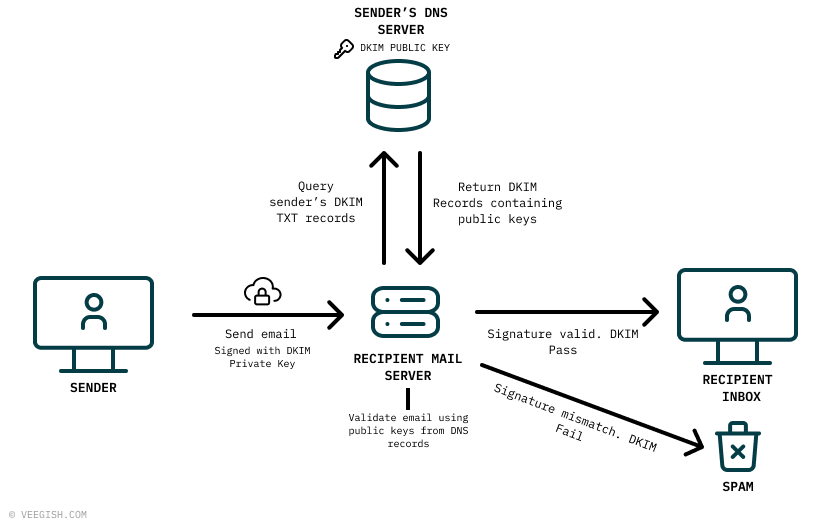
A DKIM TXT Record may look like this:
"v=DKIM1;k=rsa;p=MIIBIjANBgkqhkiG9w0BAQEFAAOCAQ8AMIIBCgKCAQEAwzezqpW1IjMwbAVlsBwzNXCPdpGOURq6UreX0Yn9WRW7hSfMIP7gjMB8mS5naXDA/2IBF4iQm0OXbcUD3SK0HN9rhJEbMsTq4DznDw0aMnbv7Bi9MBuQxV7MAJ+R8wprhPDMvRKn3y98G47fyGP6BJkyycrvi0qY2LwSkxiZWoErlJivoFNWOiorFCE21UuOMpY" "Ow9sIuxpdtuPcVwGvKDeZraOXqnvSig3qEZYu+p+C8iP1uoQMAGmfAY4xv4Ujh8hHo7xW1fLJG6Ve4XJjU+77jSdTPmLDOm6aIhx01k2RRkeKxeZEihvttgSiYP85F4vO3BNVpb1G1SPQ2/v33QIDAQAB"v, k, p are just some of the tags that form part of a DKIM record. You can read more about them here.
Like SPF, implementing DKIM alone doesn’t help in preventing email spoofing as it does not check the envelope and email FROM header. This is where DMARC comes into play.
DMARC to the rescue!
Domain-Based Message Authentication Reporting and Conformance (DMARC) is an email authentication mechanism which is based on SPF and DKIM alignment. Based on how you configure a DMARC policy, DMARC will check if either SPF or DKIM (or both, if configured) passes, before letting an email through, otherwise the email gets rejected. A well configured DMARC policy will check that the email envelope FROM and the email header FROM and reject the email if there is a domain mismatch. This is called DMARC alignment. Apart from preventing spoofing, DMARC also provides email reports which contains information related to emails passing or failing DMARC authentication.
A DMARC record may look as follows:
v=DMARC1; p=reject; rua=mailto:[email protected]; adkim=s; aspf=s;v=DMARC1; is the start of the record, indicating that this record is to be treated as a DMARC DNS record.
p=reject; is the part which tells the mail server what to do when DMARC alignment fails. p can take the value none , quaratine and reject which is the strictest measure.
rua=mailto:[email protected]; specifies the address where to send reports. There are 2 types of reports - aggregate (rua) and forensic (ruf).
adkim=s; basically says that DKIM checks need to be strictly enforced. s stands for strict. Its alternative, r stands for relaxed.
aspf=s; same as adkim=s but for SPF checks
Now that we know about The Holy Trinity of email authentication, we can apply them to morezo.xyz email configuration and try to send the spoofed email again to see if anything has changed.
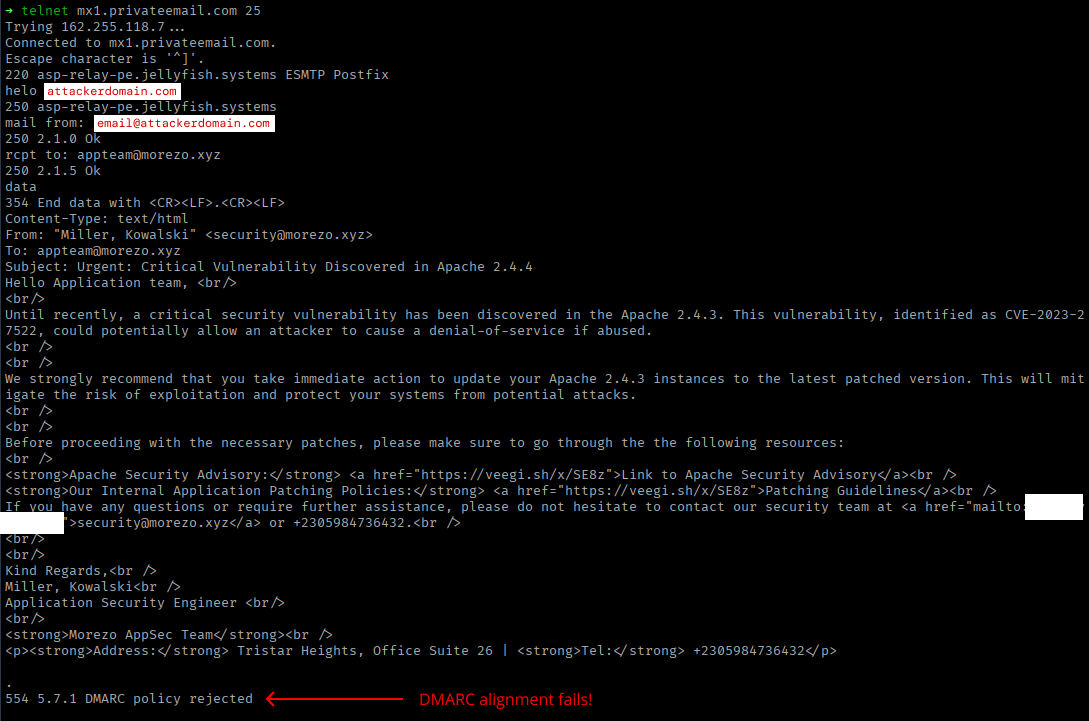
As expected, the combination of SPF, DKIM and DMARC successfully stopped our “malicious” email from reaching the recipient. Mission accomplished!
Conclusion
Email security doesn’t comprise of a single solution, rather it’s a set of complex solutions that need to be implemented together. Each one of these solutions have their own challenges and complexities that need to be dealt with. The examples mentioned earlier are very basic, introductory at most. In reality an organization can have many departments which in turn can have multiple mail servers configured in different ways. Implementing SPF, DKIM and DMARC can become really challenging fast and strict DMARC alignment may not be favourable. It’s important to experiment with different relaxed policies and see what works without breaking any existing email flow first and then gradually try stricter policies.
